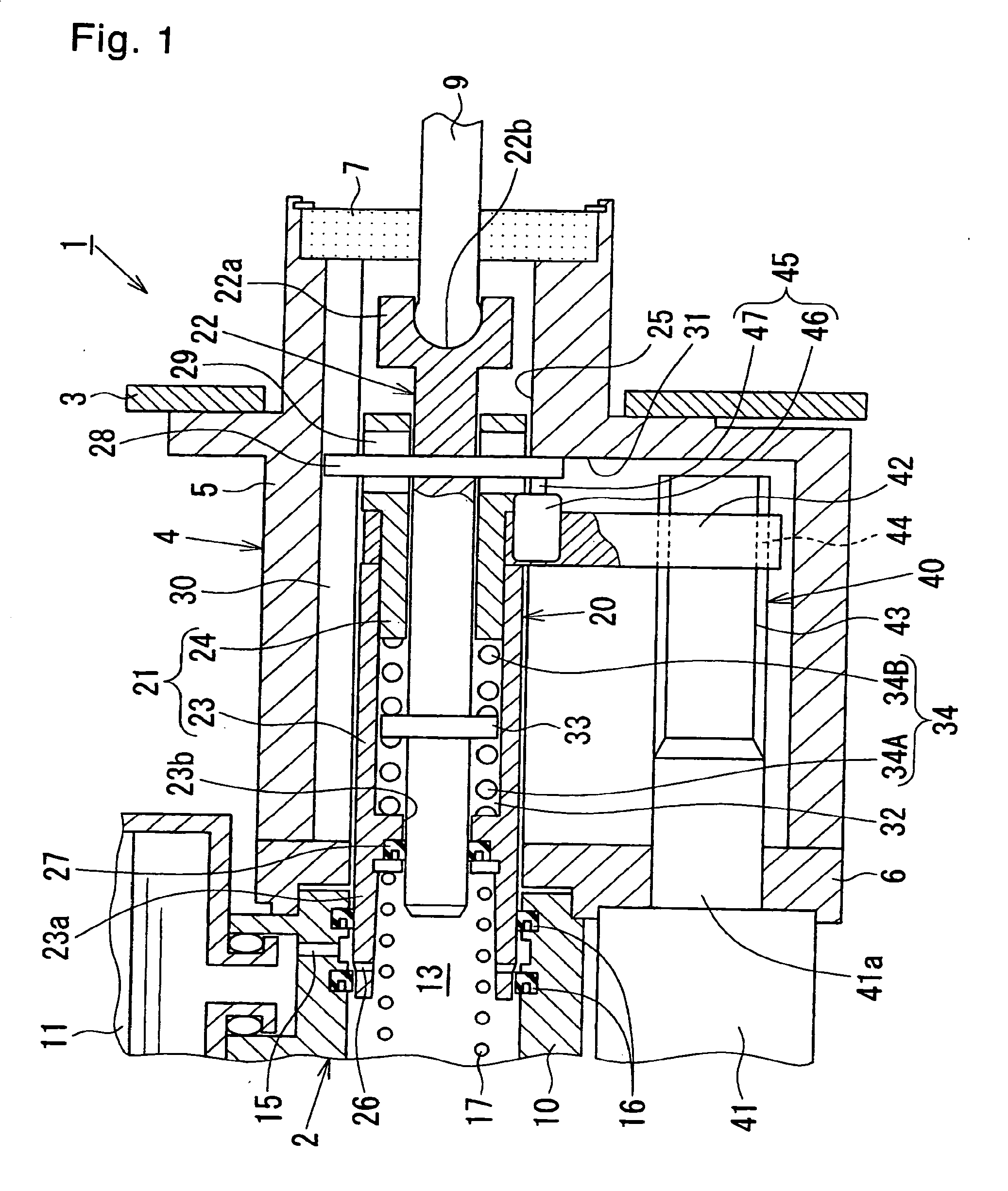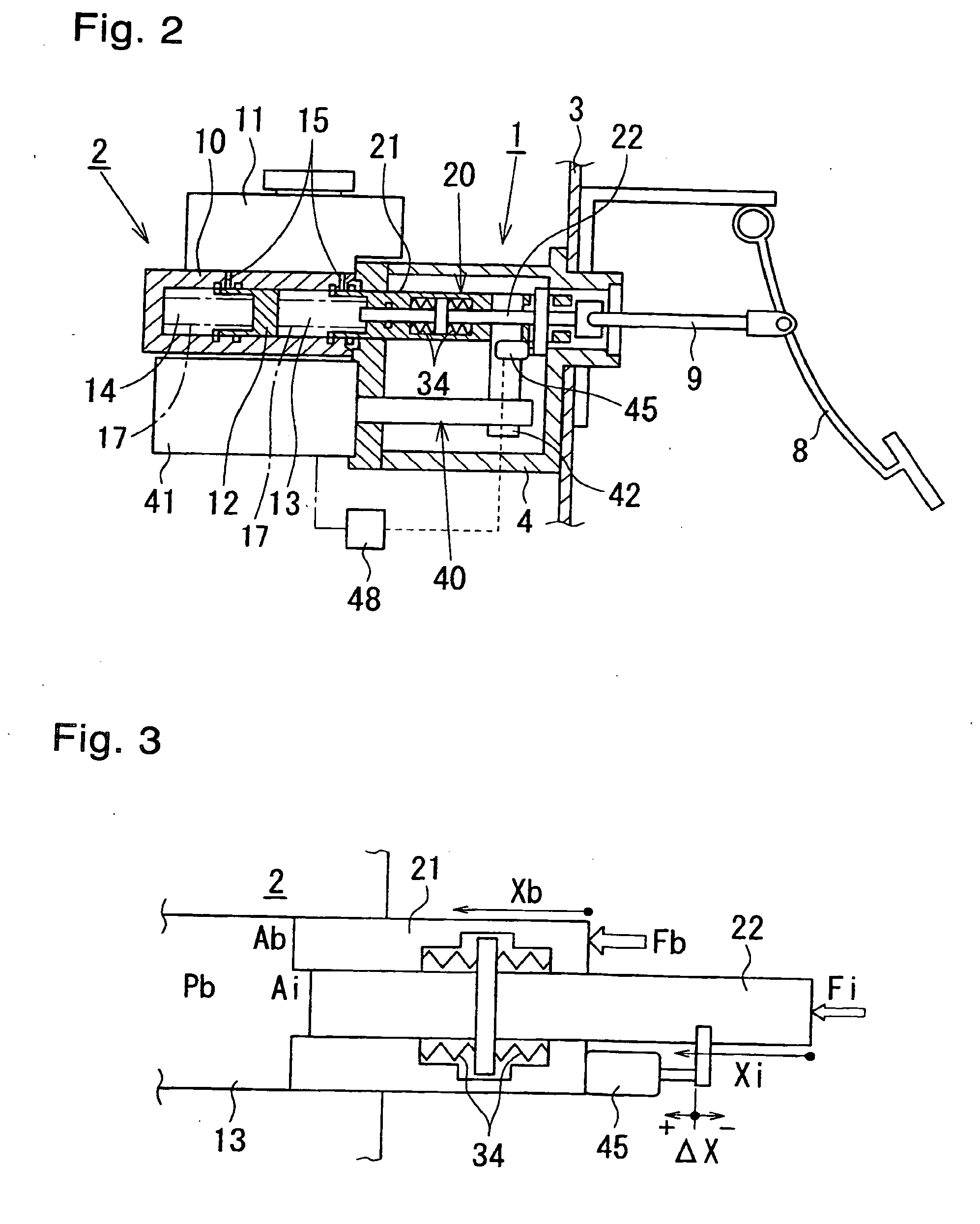Electrically actuated brake booster
a brake booster and electric actuator technology, applied in the field of boosters, can solve the problems of increasing costs, increasing costs, and failing to increase the boost ratio of the input thrust, and achieve the effect of increasing or decreasing the boost ratio
- Summary
- Abstract
- Description
- Claims
- Application Information
AI Technical Summary
Benefits of technology
Problems solved by technology
Method used
Image
Examples
first embodiment
[0026]FIGS. 1 and 2 show an electrically actuated brake booster according to the present invention. The electrically actuated brake booster 1 comprises: a piston assembly 20 (described later) used as a primary piston of a tandem master cylinder 2 and; an electric actuator 40 (also described later) for applying a thrust (a booster thrust) to a booster piston 21 (a tubular member or a second member) which is a constituent component of the piston assembly 20, the piston assembly 20 and the electric actuator 40 being disposed inside and outside a housing 4 (a support member) that is secured to a wall 3 of a vehicle compartment. The housing 4, as best shown in FIG. 1, comprises: a housing body 5, a rear portion of which is inserted into the vehicle compartment; and a covering plate 6 for covering a front opening of the housing body 5. The tandem master cylinder 2 and an electric motor 41, which is a constituent component of the electric actuator 40, are provided on a front surface of the...
second embodiment
[0055] In the second embodiment, a potentiometer 82 (first absolute-displacement detecting means) for detecting an absolute displacement of the input piston 59 relative to a vehicle body is disposed in the attachment member 56, which is secured to the wall 54 of the vehicle compartment. The potentiometer 82 comprises: a body portion 83 containing a resistive element; and a sensor rod 84 extending in parallel with the input piston 59 from the body portion 83 into the vehicle compartment. The sensor rod 84 is constantly urged in its projecting direction by a spring provided in the body portion 83, such that a tip of the sensor rod 84 abuts against a bracket 85 fixed to the rear portion of the input piston 59. On the other hand, the electric motor 66, which is a DC brushless motor, contains a resolver 86 for detecting a magnetic pole position in order to control rotation of the electric motor 66. Besides detecting a rotational displacement of the motor, the resolver 86 functions as rot...
PUM
 Login to View More
Login to View More Abstract
Description
Claims
Application Information
 Login to View More
Login to View More - R&D
- Intellectual Property
- Life Sciences
- Materials
- Tech Scout
- Unparalleled Data Quality
- Higher Quality Content
- 60% Fewer Hallucinations
Browse by: Latest US Patents, China's latest patents, Technical Efficacy Thesaurus, Application Domain, Technology Topic, Popular Technical Reports.
© 2025 PatSnap. All rights reserved.Legal|Privacy policy|Modern Slavery Act Transparency Statement|Sitemap|About US| Contact US: help@patsnap.com



